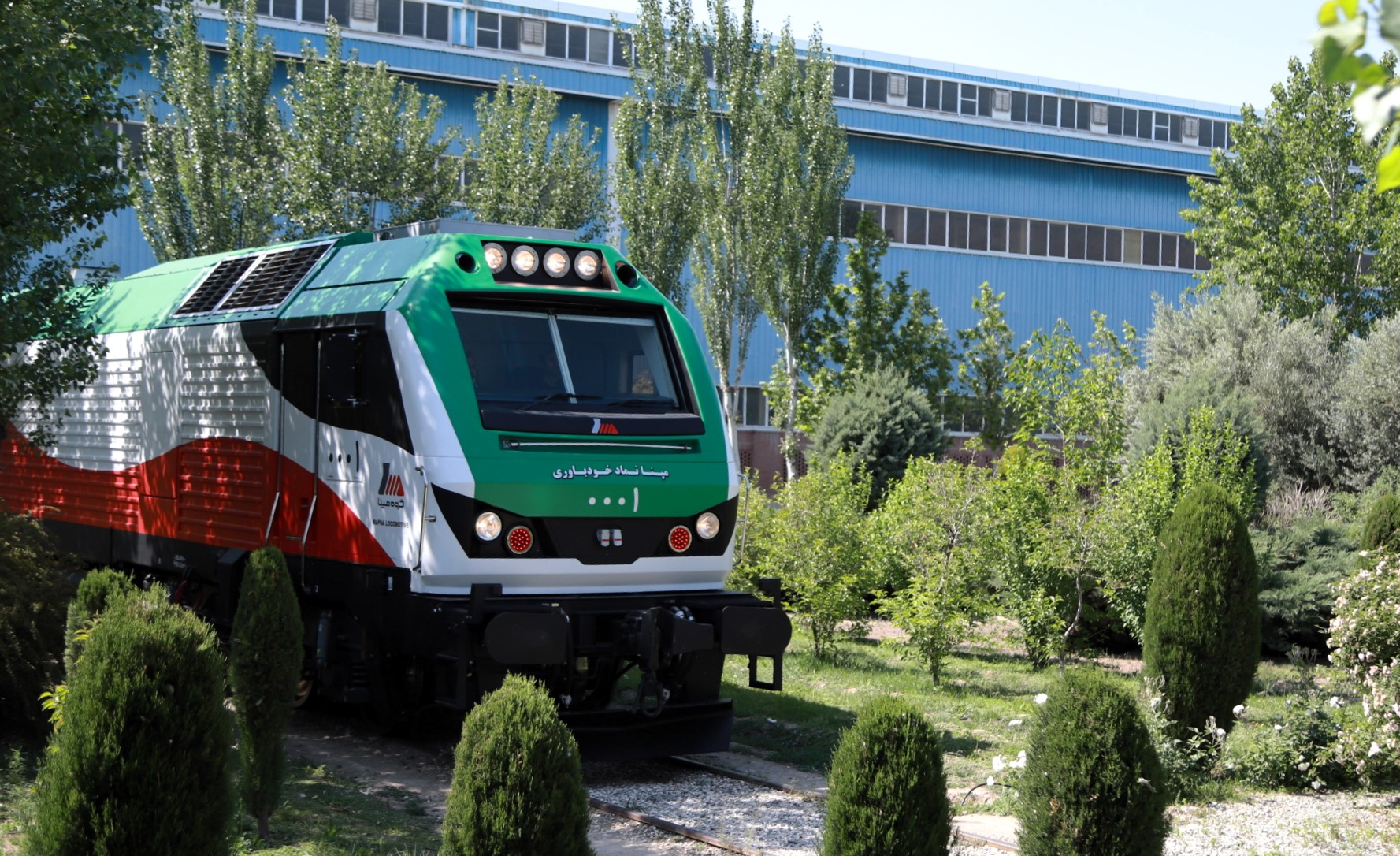MAPNA Group unveiled its homegrown MAP30 freight locomotive and MP610 diesel engine in a ceremony attended by senior Iranian officials.
The ceremony was held on Monday, May 13, 2024, at MAPNA Group’s subsidiary companies in Alborz Province.
It was attended by Iranian Minister of Industry, Mine and Trade Abbas Aliabadi, MAPNA Group President Mohammad Owliya, and Head of the Islamic Republic of Iran Railways (known as RAI) Miad Salehi.
What is the significance of this locomotive?
The MAP30 freight locomotive, a robust addition to the country’s rail fleet, is designed to withstand the most severe weather conditions.
The locomotive, boasting a power of 4000 horsepower, comes equipped with a range of key components, including a traction motor, compressor, blower, axles, electric motors, and radiators, all of which have been manufactured within MAPNA Group subsidiary companies.
Furthermore, for the first time in the country, the design and construction of the locomotive diesel engine, locomotive generator, and locomotive AC control system have been accomplished as key subsystems of the locomotive.
The successful design of the heavy locomotive AC control system stands as a significant and strategic scientific and engineering achievement, made possible by the dedicated efforts of MAPNA company specialists.
The project also signifies a major step towards reducing technical dependence on foreign companies in this field. This will notably enhance the availability of locomotives in the country and optimize the efficiency of the country’s rail fleet.
Furthermore, the domestic construction of a 4000-horsepower diesel engine and generator positions Iran among the nations that have this technology.
Minister eyes production of electric, hybrid locomotives
Addressing the event, Aliabadi noted that conglomerates, like MAPNA Group, that enjoy state-of-the art technologies are “sources of pride” for the country. He emphasized the need to industrialize Iran and create a market for its industry.
The minister pointed out the versatility of the unveiled 4,000 horsepower engine, noting its potential applications in electrical, marine, and railway fields.
“The production of a 4,000-horsepower engine has been a long-standing goal for the country, which has now been achieved, and we will produce electric and hybrid locomotives,” he added.
Aliabadi stressed the need for substantial investment in the country’s railway industry. He acknowledged Iran’s “vast manpower capacity” and affirmed the government’s commitment to bolster domestic production. “MAPNA is expected to incorporate smart, electric, and hybrid locomotives in their future production plans.”
Moving towards rail transport electrification
MAPNA Group President Mohammad Owliya also addressed the ceremony. He noted that the primary measures for designing and building the MAP30 locomotive were undertaken during Aliabadi’s tenure as the president of the colglomerate.
“This product is a source of honor for the country’s transportation industry,” he said.
He also pointed to the challenges posed by the supply of raw materials. The global supply network has faced numerous difficulties since the COVID-19 pandemic and due to geopolitical events worldwide, he said, noting that MAPNA Group has not been immune to these challenges.
Owliya also highlighted the necessity of collecting payments for products and services sold, noting that discussions are currently underway with the related institutions on this matter.
With increased support from related institutions, product delivery to employers could be expedited, he said, noting that the conglomerate will move toward electrification of rail transportation in the future.
MAPNA and RAI cooperation
Salehi was the next speaker, who commended the domestic experts for developing the key rail product.
The collaboration between the MAPNA Group and the Islamic Republic of Iran Railways has resulted in significant achievements in manufacturing wagons, locomotives, and other related products.
He noted that in recent years, 69 new locomotives have been added to the country’s railway fleet under a contract with MAPNA Group. Furthermore, another contract for the construction of 50 locomotives is currently underway, with 30 locomotives already delivered to the railways, he added.
Salehi emphasized the need for special funds to develop railway lines and meet the equipment needs of the company. He mentioned that the Iranian Parliament has allocated some $833 million (with the exchange rate at 600,000 rials per one US dollar at the time of translation) for the purchase of locomotives, parts, the development of railway lines, and other needs for the railway complex this year. However, he pointed out that the estimated need exceeds $2.3 billion.










